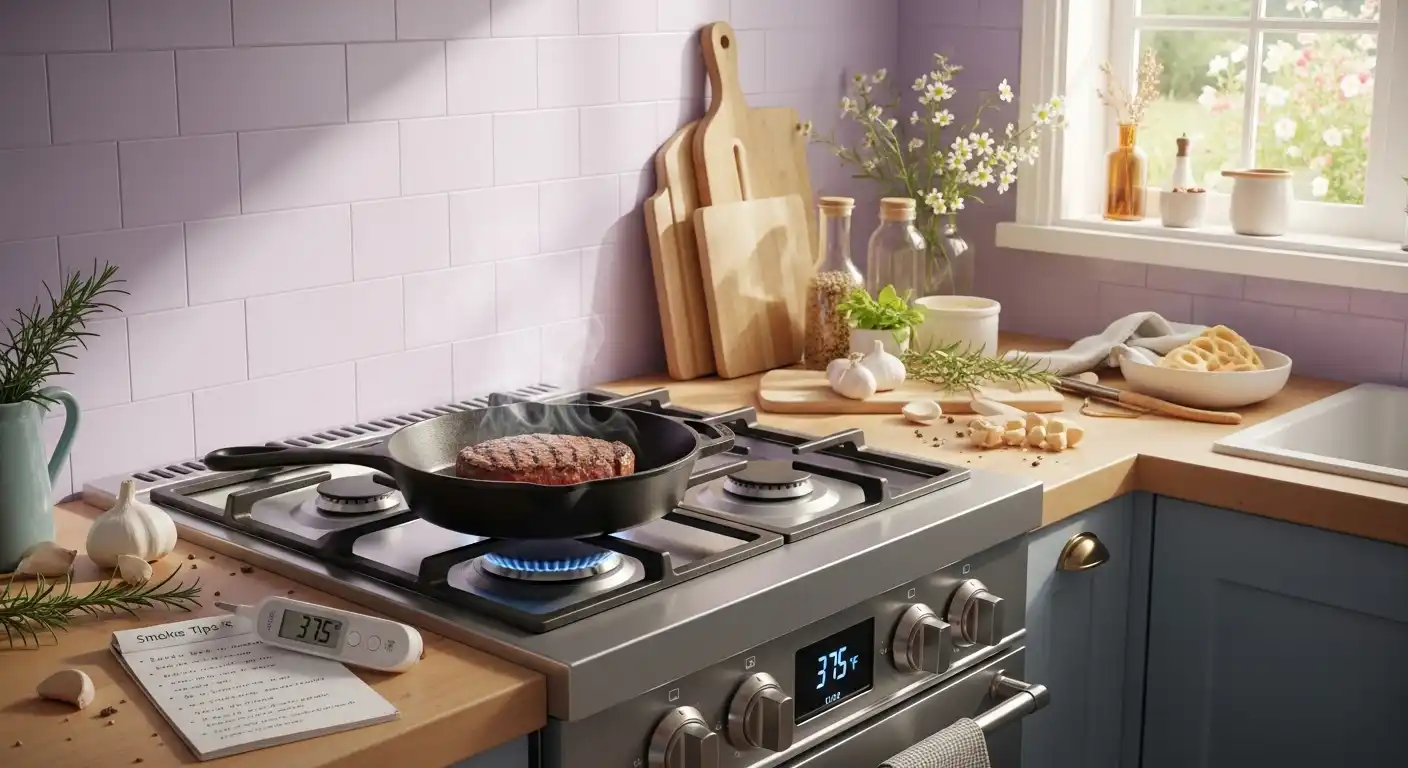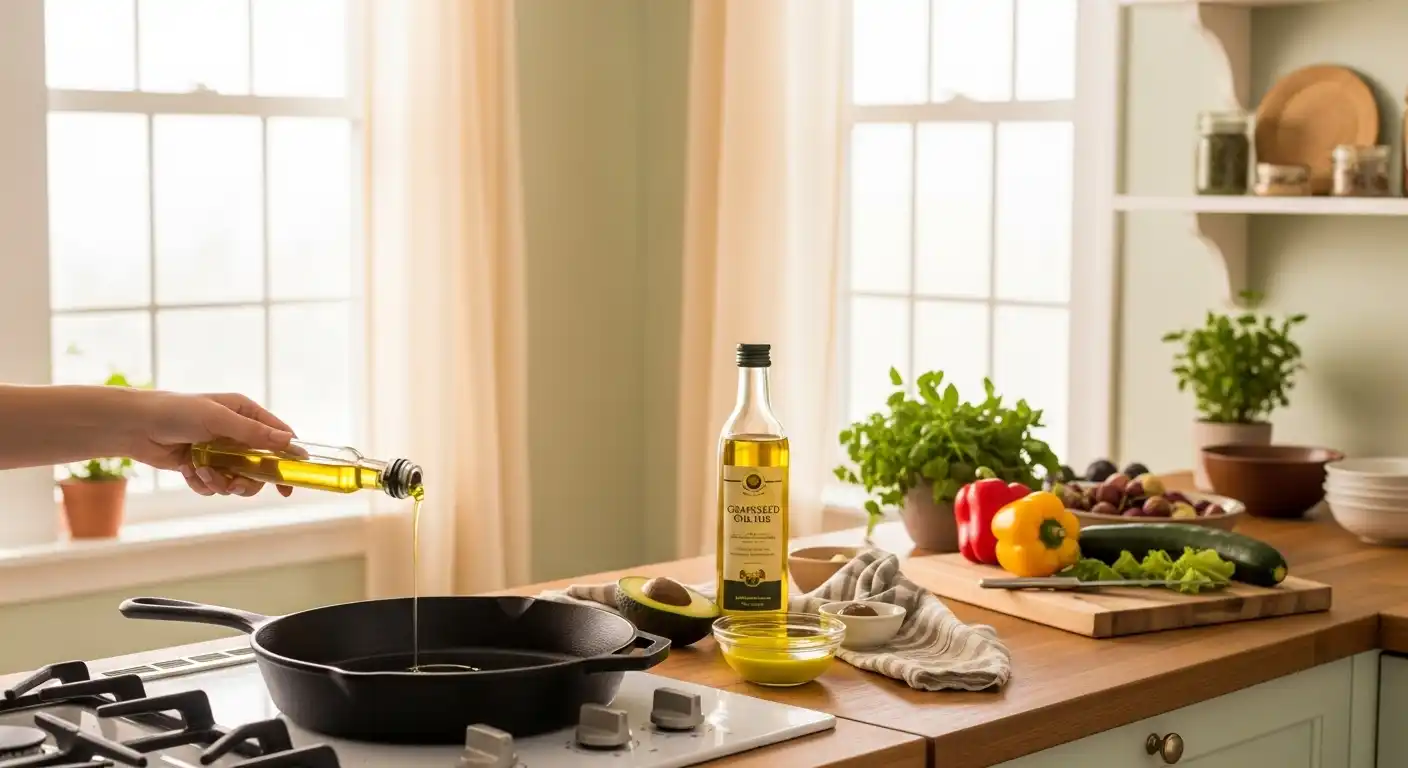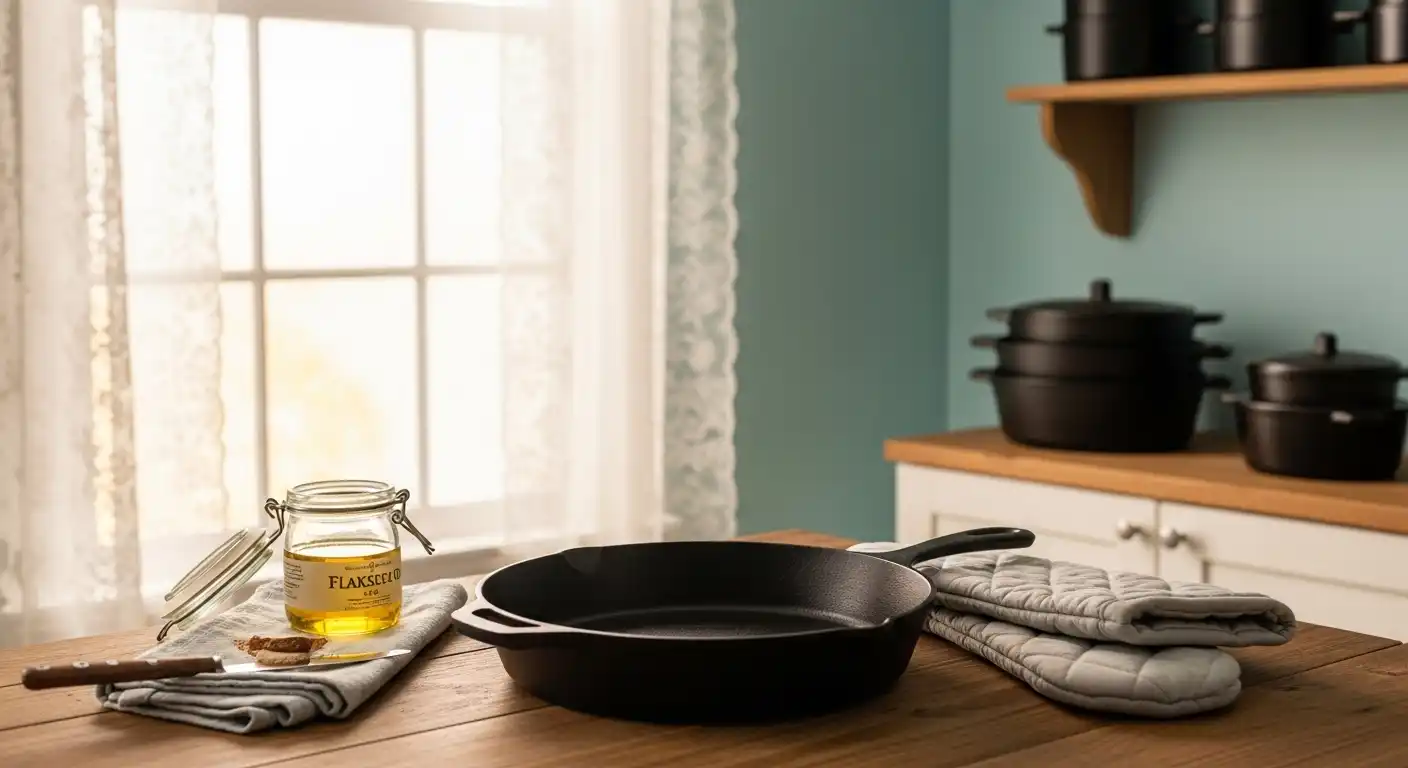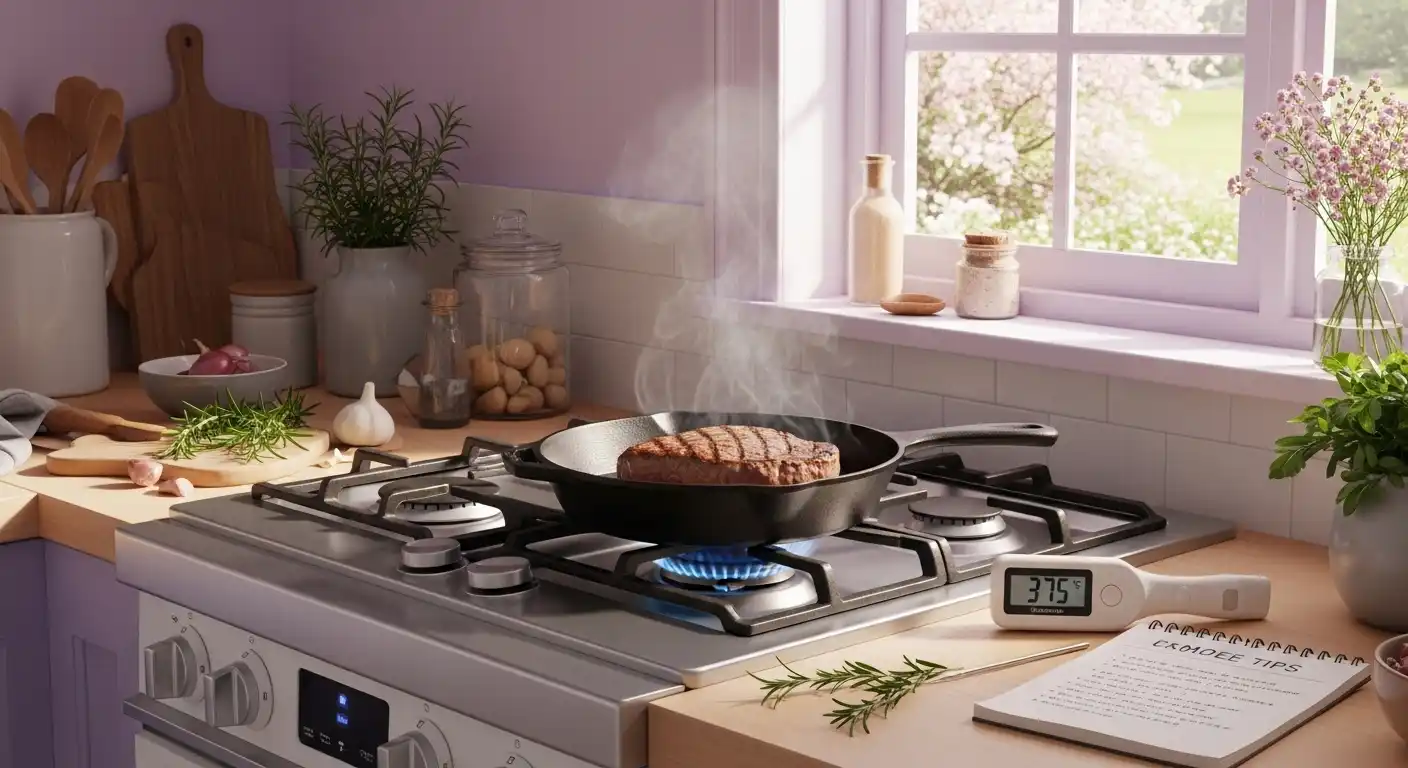How To Reduce Smoke When Cooking With Cast Iron

Cooking with cast iron is a beloved tradition for many home chefs, offering unparalleled heat retention and a natural non-stick surface when properly seasoned.
However, one common frustration is the smoke that can fill your kitchen when using a cast iron skillet.
Whether you’re searing a steak or frying vegetables, excessive smoke can set off alarms and make cooking less enjoyable.
Fortunately, there are practical steps you can take to minimize smoke while still enjoying the benefits of cast iron cooking.
🎄 Christmas & Year-End Amazon Deals !
Don’t miss out on the best discounts and top-rated products available right now!
*As an Amazon Associate, I earn from qualifying purchases.
In this guide, we’ll explore why cast iron smokes, how to reduce smoke when cooking with cast iron, and tips to keep your kitchen clear and your meals delicious.
Why Does Cast Iron Produce Smoke?
Cast iron skillets smoke primarily due to high heat and the interaction of oils or food with the pan’s surface.
When the cooking oil or fat reaches its smoke point—the temperature at which it begins to break down and burn—smoke is produced.
Additionally, improper seasoning or residue from previous meals can contribute to smoking.
Understanding these factors is the first step to controlling smoke and ensuring a better cooking experience.
Choose the Right Oil for Cooking

One of the most effective ways to reduce smoke when cooking with cast iron is selecting an oil with a high smoke point.
Oils like avocado oil, grapeseed oil, or refined canola oil can withstand higher temperatures without breaking down.
Avoid low smoke point oils like extra virgin olive oil or butter for high-heat cooking, as they burn quickly and create more smoke.
For example, avocado oil has a smoke point of around 520°F, making it ideal for searing in your cast iron skillet.
Always apply a thin layer of oil to prevent pooling, which can lead to burning and smoking. A light coating ensures even cooking and less smoke.
Maintain Proper Seasoning

A well-seasoned cast iron pan is less likely to smoke. Seasoning creates a protective layer that prevents food from sticking and reduces the chance of burning residue.
If your pan is under-seasoned or the seasoning is damaged, it may smoke more.
To maintain seasoning, clean your skillet properly after each use and re-season as needed.
For detailed steps, check out our guide on seasoning a cast iron Dutch oven, which applies similar principles to skillets.
🎄 Christmas & Year-End Amazon Deals !
Don’t miss out on the best discounts and top-rated products available right now!
*As an Amazon Associate, I earn from qualifying purchases.
If you notice black residue on your cast iron skillet, it could indicate improper seasoning or cleaning, which may contribute to smoking.
Control Cooking Temperature
High heat is often the culprit behind smoky cast iron cooking. While cast iron excels at retaining heat, it doesn’t require extreme temperatures for most dishes.

Preheat your skillet gradually over medium heat to avoid hot spots that cause smoking.
Use a thermometer to monitor the pan’s surface temperature if possible. For most searing or frying tasks, aim for 350–400°F.
Exceeding this can push oils past their smoke point, creating unnecessary smoke.
If you’re cooking on an induction cooktop, ensure your skillet is compatible.
Learn more in our post on using a cast iron skillet on an induction cooktop.
Preheat Your Skillet Properly
Preheating your cast iron skillet correctly is key to reducing smoke. Place the pan on medium heat and allow it to warm up gradually for 5–10 minutes.
This ensures even heat distribution and prevents the pan from getting too hot too quickly.
Add oil only after the pan is preheated. This allows the oil to form a thin, even layer that’s less likely to burn.
Avoid adding cold oil to a screaming-hot pan, as it can reach its smoke point almost instantly.
For those using a cast iron wok, similar preheating principles apply to minimize smoke while stir-frying.
🎄 Christmas & Year-End Amazon Deals !
Don’t miss out on the best discounts and top-rated products available right now!
*As an Amazon Associate, I earn from qualifying purchases.
Clean Your Pan Thoroughly
Food residue or old oil left on your cast iron can burn and produce smoke during cooking. After each use, clean your skillet properly to remove any debris.
Use hot water and a brush or non-abrasive sponge, avoiding soap unless absolutely necessary.
For stubborn stuck-on food, try boiling water in the pan to loosen it.
For more cleaning tips, see our guide on how to clean a cast iron wok, which can be adapted for skillets.
Dry the pan completely to prevent rust, and apply a thin layer of oil to maintain the seasoning.
A clean pan is less likely to smoke during your next cooking session.
Avoid Overcrowding the Pan
Overcrowding your cast iron skillet can lead to uneven cooking and excess smoke.
When too much food is added, it lowers the pan’s temperature, causing food to steam rather than sear. This can release moisture and oils that burn and smoke.
Cook in smaller batches to maintain consistent heat. This ensures proper searing and reduces the likelihood of smoke.
For larger meals, consider using a cast iron Dutch oven for better heat distribution.
Use Ventilation to Manage Smoke
Even with the best techniques, some smoke may still occur when cooking with cast iron.
Ensure your kitchen is well-ventilated by turning on the range hood or opening a window.
🎄 Christmas & Year-End Amazon Deals !
Don’t miss out on the best discounts and top-rated products available right now!
*As an Amazon Associate, I earn from qualifying purchases.
This helps disperse any smoke that does form, keeping your cooking environment comfortable.
If you’re cooking on a glass-top stove, proper ventilation is especially important, as smoke can linger in enclosed spaces.
Avoid Cooking Certain Foods
Some foods, like fatty meats or sugary marinades, are more likely to produce smoke when cooked in cast iron.
The high fat content or sugars can burn quickly, especially at high temperatures.
Trim excess fat from meats before cooking and avoid sugary sauces until the end of the cooking process.
For example, when making stir-fries in a cast iron wok, add sauces after removing the pan from heat to minimize burning.
Check Your Cooktop Compatibility
Using cast iron on the wrong cooktop can contribute to smoking issues.
For instance, cast iron on an induction cooktop requires proper contact to heat evenly.
Uneven heating can cause hot spots that burn oil and create smoke.
Ensure your skillet is suitable for your cooktop. For more details, read our article on whether cast iron will scratch an induction cooktop.
Similarly, avoid using cast iron in a microwave, as it’s not safe and can cause damage.
Learn more in our post on using a cast iron skillet in a microwave.
🎄 Christmas & Year-End Amazon Deals !
Don’t miss out on the best discounts and top-rated products available right now!
*As an Amazon Associate, I earn from qualifying purchases.
Store Your Cast Iron Properly
Improper storage can lead to rust or degraded seasoning, which may cause smoking during cooking.
Store your cast iron in a dry place and avoid stacking heavy items on top, which can damage the seasoning.
For tips on proper storage, check out our guide on how to store food in cast iron cookware.
Proper storage ensures your skillet remains in top condition and smokes less.
When to Replace Your Cast Iron
While cast iron is durable, a heavily damaged or poorly maintained skillet may smoke excessively.
If your pan has deep scratches, cracks, or persistent smoking issues despite proper care, it may be time to replace it.
Learn how to assess your skillet’s condition in our post on how often to replace a cast iron skillet.
Alternatives to Cast Iron
If smoke continues to be an issue, you might consider alternative cookware for certain dishes.
Stainless steel or enameled cast iron can be less prone to smoking in some cases.
For more options, explore our article on what can you use instead of a cast iron skillet.
For low-smoke deep frying, consider using an enameled cast iron Dutch oven.
Final Thoughts
Reducing smoke when cooking with cast iron is achievable with the right techniques and care.
By choosing high smoke point oils, maintaining proper seasoning, controlling heat, and ensuring good ventilation, you can enjoy the benefits of cast iron without a smoky kitchen.
Experiment with these tips and adapt them to your cooking style.
🎄 Christmas & Year-End Amazon Deals !
Don’t miss out on the best discounts and top-rated products available right now!
*As an Amazon Associate, I earn from qualifying purchases.
With practice, you’ll master the art of smokeless cast iron cooking, whether you’re searing, frying, or baking in your oven-safe cast iron skillet.
Happy cooking, and enjoy your smoke-free cast iron experience!
